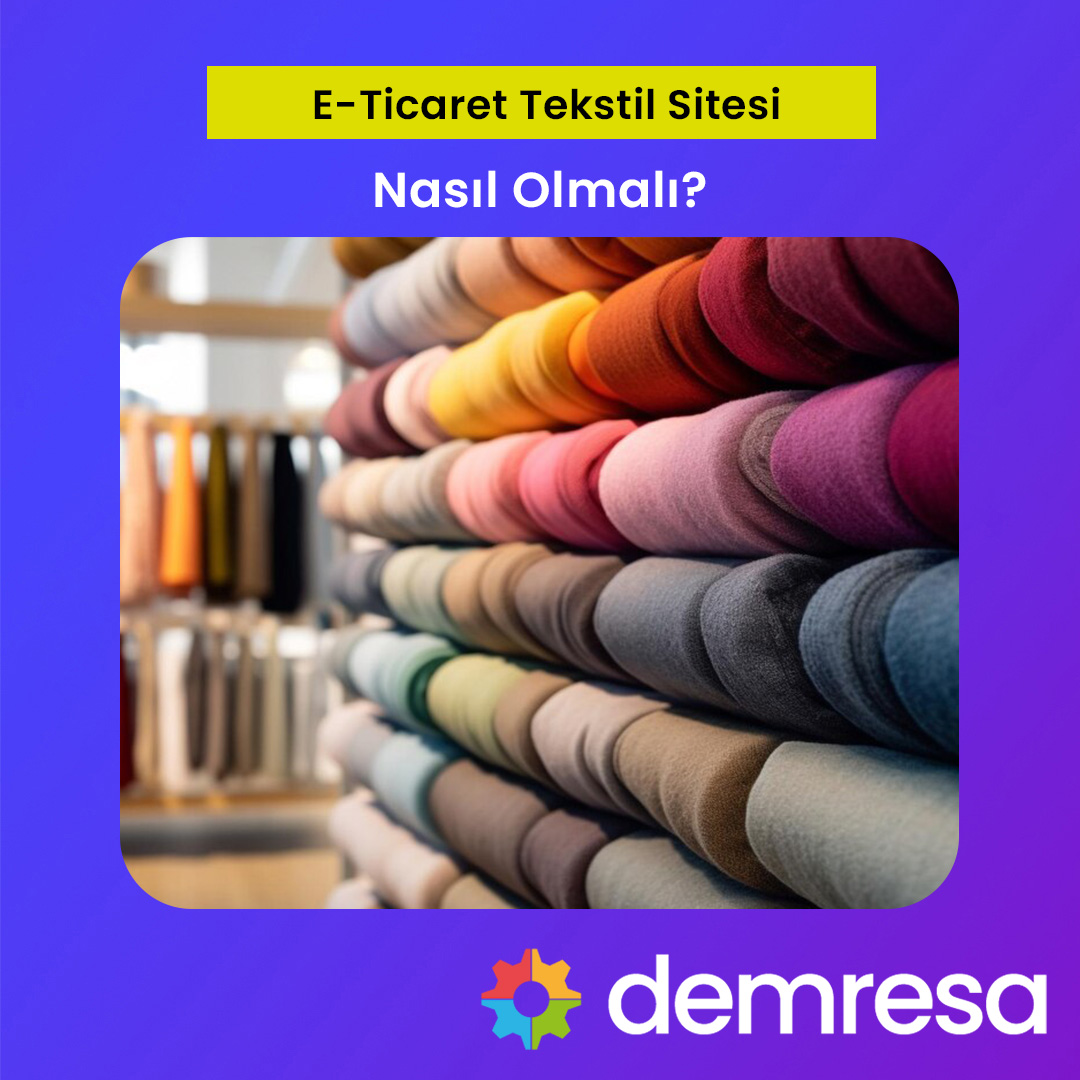
Company Formation Process
How to Establish an E-Commerce Company?
The first step to setting up a textile e-commerce site is to establish a legal company. It is important to choose the type of company (sole proprietorship, limited, joint-stock). The most suitable company type should be selected for an e-commerce business.
Required Legal Documents and Permits
Documents such as tax number, trade registry, tax plate, and social security registration are mandatory for legal e-commerce activities. Additionally, permits are required for selling textile products, as well as for import and export processes.
Trademark Registration and Copyrights
Protecting your brand is an important step, especially in the textile sector. Registering your trademark protects your products from being copied and strengthens your brand.
Product Supply and Supplier Selection
Supplier Research and Selection
The quality of suppliers in the textile sector directly affects the success of products. It is necessary to research local and international suppliers to find reliable suppliers and maintain a good price-performance balance.
Product Quality and Diversification
The quality of textile products is critical for customer satisfaction. Following trends is necessary to expand the product range and appeal to different customer groups.
Stock Management and Storage
Stock management is very important for smooth e-commerce operations. Tracking stock levels prevents overstock or shortage situations and increases customer satisfaction.
E-Commerce Site Setup
Choosing E-Commerce Infrastructure
It is important for the infrastructure used for textile e-commerce sites to be reliable, flexible, and scalable. Choosing a strong infrastructure provider like demresa can optimize site performance.
Website Design and User Experience
Mobile-friendly, user-friendly, and aesthetic design is key to converting visitors into customers. User-friendly navigation, fast loading times, and clear visual layout are important.
Domain Name and Hosting Selection
Choosing a memorable and suitable domain name for your brand increases your visibility in the digital world. Reliable hosting services ensure the site runs continuously and quickly.
Payment Systems and Security
Integration of Payment Methods
Offering customers various payment options such as credit card, debit card, mobile payment, and cash on delivery can increase sales. Payment infrastructures must work seamlessly.
Security Certificates and SSL Usage
SSL certificates and other security protocols should be used to ensure user security during payment processes. This increases customer trust and encourages shopping.
Protection of Customer Data (KVKK Compliant)
Protecting customer information is mandatory according to legal regulations such as GDPR and KVKK. Firewalls and data encryption methods should be used to safeguard customer data.
Shipping and Logistics Agreements
Choosing Shipping Companies and Agreement Processes
To operate a textile e-commerce site successfully, agreements with reliable shipping companies should be made. Customers should be offered fast and secure delivery options.
Shipping Tracking and Delivery Processes
Integrating a shipment tracking system to inform customers about the location of their orders is important. This increases customer satisfaction.
International Shipping and Export Processes
If you plan to sell abroad, working with international shipping companies and managing customs processes is necessary. Export permits and procedures should be handled carefully.
Returns, Exchanges and Customer Services
Return and Exchange Policies
Clear and understandable policies should be established to enable customers to make easy returns and exchanges. Fast return processes should be designed to ensure customer satisfaction.
Customer Service Management
Customer service is an important part of e-commerce operations. It is necessary to reach customers via live support, email, and phone channels to quickly resolve questions and complaints.
After-Sales Support and Customer Loyalty
After-sales services strengthen customer loyalty. Regular email updates and special campaigns increase customer engagement.
Marketing Strategies and Digital Ads
Social Media and Influencer Marketing
Social media platforms are among the most effective tools to attract customers in the textile sector. Collaborations with influencers can help expand your brand to wider audiences.
SEO and Digital Marketing Strategies
SEO work is necessary to rank high on Google and other search engines. Keywords, meta descriptions, and site content should be optimized.
Email Marketing and Loyalty Programs
Regular emails can be sent to the customer database to inform about new products, campaigns, and discounts. Loyalty programs encourage customers to shop again.
